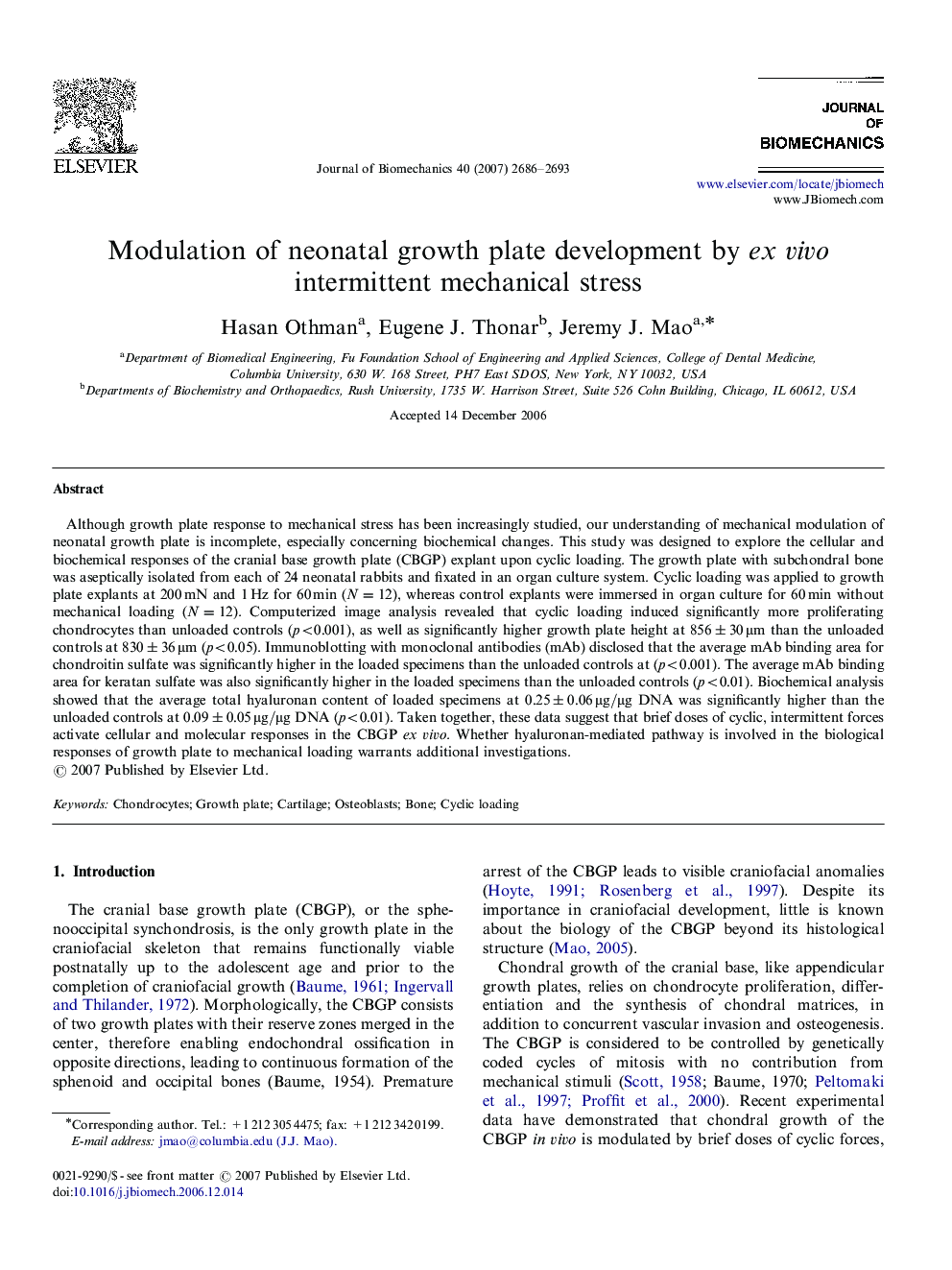| Article ID | Journal | Published Year | Pages | File Type |
|---|---|---|---|---|
| 874307 | Journal of Biomechanics | 2007 | 8 Pages |
Although growth plate response to mechanical stress has been increasingly studied, our understanding of mechanical modulation of neonatal growth plate is incomplete, especially concerning biochemical changes. This study was designed to explore the cellular and biochemical responses of the cranial base growth plate (CBGP) explant upon cyclic loading. The growth plate with subchondral bone was aseptically isolated from each of 24 neonatal rabbits and fixated in an organ culture system. Cyclic loading was applied to growth plate explants at 200 mN and 1 Hz for 60 min (N=12N=12), whereas control explants were immersed in organ culture for 60 min without mechanical loading (N=12N=12). Computerized image analysis revealed that cyclic loading induced significantly more proliferating chondrocytes than unloaded controls (p<0.001p<0.001), as well as significantly higher growth plate height at 856±30μm than the unloaded controls at 830±36μm (p<0.05p<0.05). Immunoblotting with monoclonal antibodies (mAb) disclosed that the average mAb binding area for chondroitin sulfate was significantly higher in the loaded specimens than the unloaded controls at (p<0.001p<0.001). The average mAb binding area for keratan sulfate was also significantly higher in the loaded specimens than the unloaded controls (p<0.01p<0.01). Biochemical analysis showed that the average total hyaluronan content of loaded specimens at 0.25±0.06μg/μg DNA was significantly higher than the unloaded controls at 0.09±0.05μg/μg DNA (p<0.01p<0.01). Taken together, these data suggest that brief doses of cyclic, intermittent forces activate cellular and molecular responses in the CBGP ex vivo. Whether hyaluronan-mediated pathway is involved in the biological responses of growth plate to mechanical loading warrants additional investigations.
